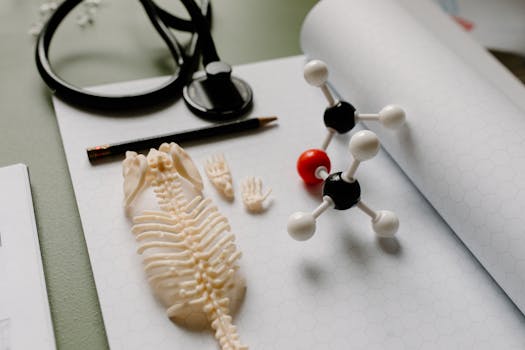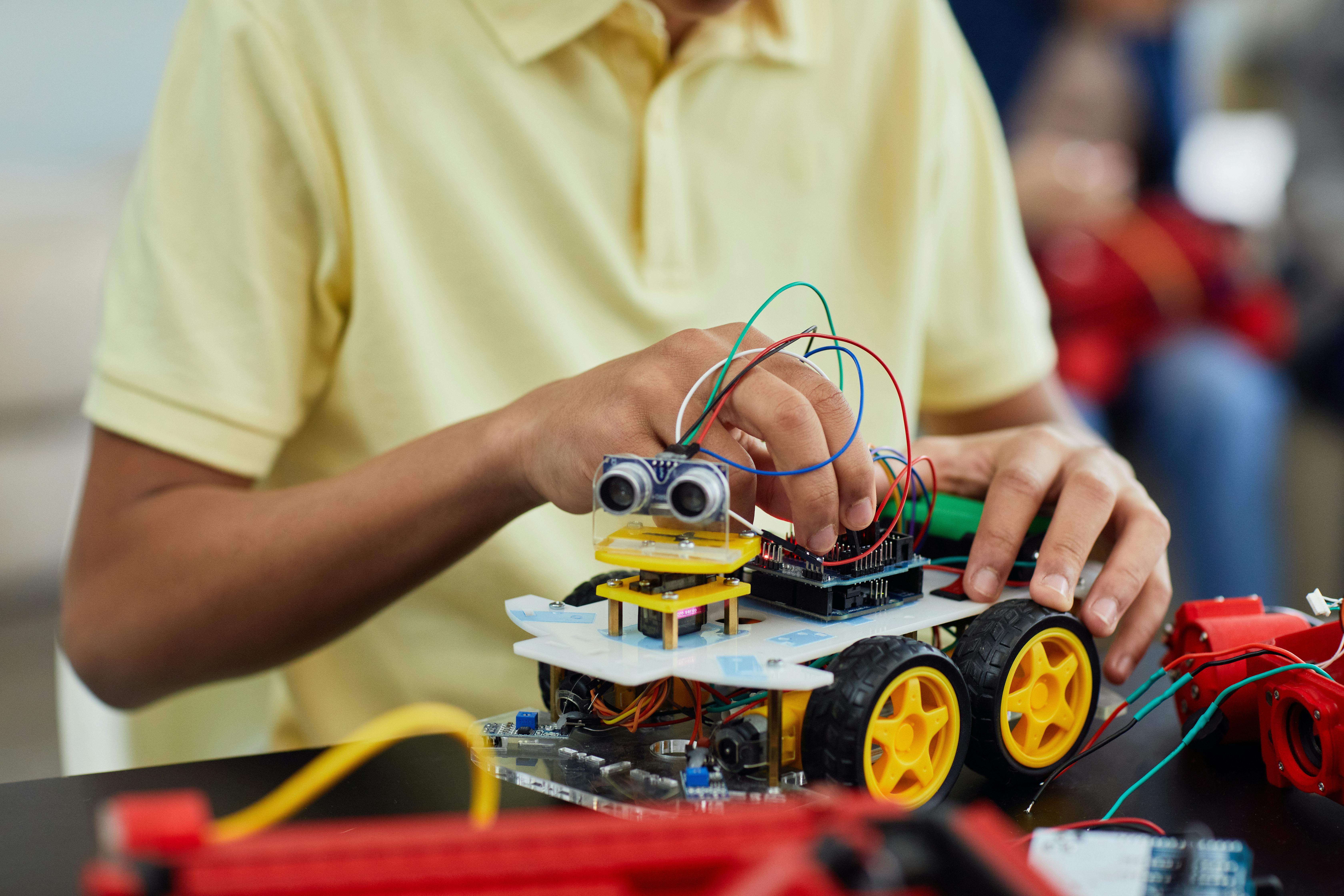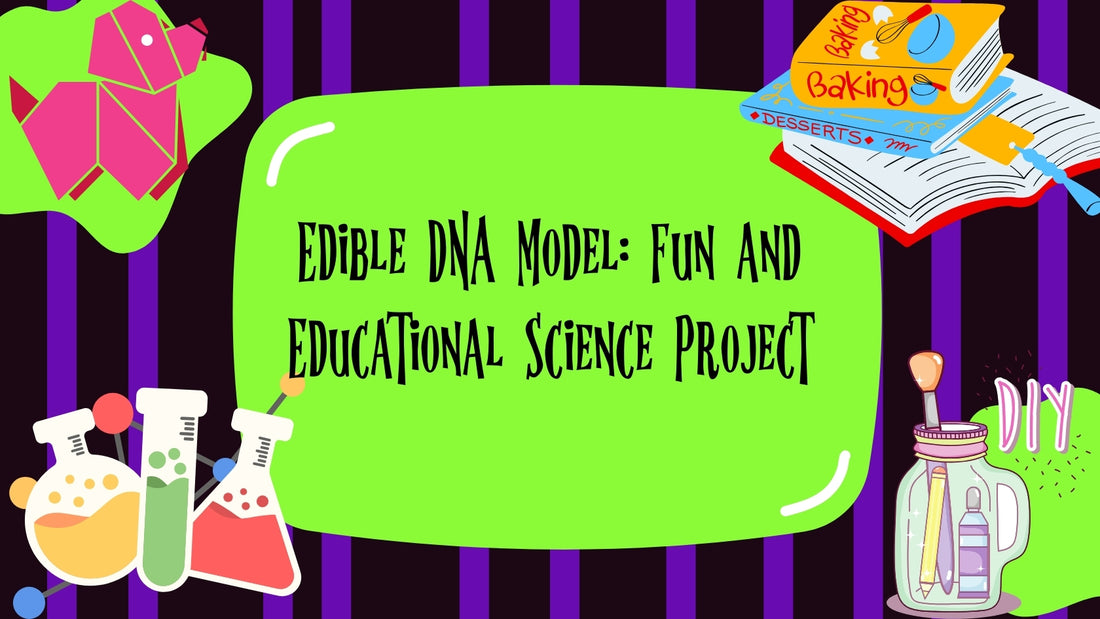As an affiliate, I earn from qualifying purchases, but this doesn't affect the reviews or recommendations—your trust is important to me!
Edible DNA Model: Fun and Educational Science Project

Today, We're Making:
- - Edible DNA
- - Edible DNA Model using Licorice Strands: Have your child construct a DNA model from red and black licorice sticks, mini marshmallows, and toothpicks, by using the marshmallows to represent the genes and the licorice strands as the backbone of the DNA molecule.
- - DNA Candy Necklace: Have your children design their own DNA using multi-colored candy beads strung on a licorice lace, in which each color represents the different components of DNA - sugar.
Remember peering through the microscope in biology class?
Were you fascinated by the intricate patterns of DNA structure? Or maybe genetics was part of what felt like an impenetrable jumble of facts and figures? Regardless, we’ve got something for you - an engaging, hands-on learning experience your kids will absolutely love!
Step into the World of Molecular Biology for Kids with Our Edible DNA Model Project
This venture is an educational science project that perfectly marries learning and fun. It's not just useful for kids, the adults can get in on the fun too!
Appealing to the taste buds, this science activity has an added cherry on top - it's a fantastic opportunity to learn genetics in a tangible, DIY manner.
Buckle Up for a Unique Venture into Edible Education
Imagine bringing science right onto your dining table with a project that is both informative and yummy. Are you ready, then, to whip up some delicious DNA?
First, let's delve into what makes this Edible DNA model such a captivating educational science project.
It's all about hands-on learning, a method of instruction that fosters a deep understanding of concepts. Bewildering subjects like DNA structure, often considered too complex for young learners, become tangible and comprehensible when they can touch, feel, and more importantly, eat their creations. The best part of this DNA science project is that it's not limited to the classroom but can also be a fun, edible project for kids to do at home. Think of it as learning that you can quite literally sink your teeth into!
This DIY DNA model is as delicious as it is enlightening
Making it an engaging at-home science project that just might kick-start a lifetime interest in molecular biology for kids. Using simple kitchen ingredients like marshmallows and licorice, children can learn genetics in a visually-friendly, interactive way. They get to understand the DNA structure, not from an abstract theoretical perspective, but from a hands-on, tactile, and gustatory experience. Turning the abstract into a tactile adventure motivates kids to not just learn, but have a heap of fun while doing so.
Now, let's talk about this from a parent or a teacher's perspective.
Science fair projects sometimes can be a bit daunting—complicated instructions, hard-to-find materials, and the pressure of making it work. However, the Edible DNA model project is not only child-friendly but also an easy science project suitable for adults. With simple, clearly explained steps, it is an ideal choice for both school science projects and exciting science crafts for kids at home. Not to mention, it's an ingenious way to integrate science education into their regular playtime or cooking sessions.
Besides the educational benefits, the Edible DNA model is also a great interactive science project tool to foster creativity and imagination.
Older children can be encouraged to experiment with different edible materials or even reinvent the DNA model. It could spark interesting dinner table conversations around various biology projects or even prompt exploration of other edible science experiments. The opportunities for fun and learning are limitless!
Picture the look of awe and delight on your child's face when they hold their very own DIY genetics model.
They wouldn't just know that DNA is the blueprint of life—they would feel it, see it, understand it—and the bonus: eat it. Yes, science can be hard, but with an Edible DNA model, it's a piece of cake!

Hands-On Learning with Edible DNA Models
From DNA Strands to Sugar Treats: Making Learning Delightful
From marveling at the patterns of DNA strands to eating them as colorful, sugary treats, the Edible DNA model brings learning to life in a delightful and impactful way.
Combining Learning and Fun: A Hands-On Adventure
By transforming complex theories into a hands-on, digestible adventure, it unlocks curiosity, encourages exploration, and makes the journey of acquiring knowledge a sheer joy for kids and adults alike.
A Delicious Journey into Genetics
So go ahead, whip up this delectably enlightening project with your kids and watch as the wonders of genetics unravel in the most delicious way possible.

You May Also Like These:
Edible DNA Model Using Licorice Strands
Have fun with your kids while teaching them about DNA structure by creating an edible DNA model using licorice strands. This STEM activity is hands-on, engaging, and promotes scientific understanding.
Ingredients
- 30 red licorice strands
- 30 black licorice strands
- 60 toothpicks
- 30 marshmallows, in four different colors
Instructions
Assembling the Sugar Phosphate Backbone
- Gather 30 black and 30 red licorice strands. These will represent DNA's sugar phosphate backbone.
- Arrange two strands of licorice (one red and one black) alongside each other.
- Insert a toothpick into the ends of the licorice strands, keeping them parallel.
Creating the DNA Base Pairs
- Represent the DNA base pairs (Adenine, Thymine, Cytosine, Guanine) with marshmallows. Choose a different color for each base.
- Connect the Adenine (A) with Thymine (T) and Cytosine (C) with Guanine (G) using toothpicks.
- Repeat this step using matching marshmallow colors, until you have 30 pairs of marshmallows of each color combination.
Finishing the DNA Model
- Now, take one of your assembled licorice backbones and stick the free end of a toothpick with a marshmallow pair into one licorice strand.
- Do the same for the other side of the twisted pair with the other marshmallow end and the other strand of licorice.
- Repeat this process, alternating between colors, until the DNA strand is fully assembled.
- Finally, twist the completed DNA model gently to create the characteristic double helix shape.
Now, your edible DNA model is complete! You can discuss with your child how DNA is the building block of life, explaining the role of each component in the real DNA structure.
Mini Marshmallows STEM/Experiment Instructions
Create a fun and educational experiment with mini marshmallows. Not only will you connect with your child but you will also be helping them learn about science, technology, engineering, and mathematics (STEM). Here's how to do it:
Materials You Will Need:
- Mini Marshmallows (a bag)
- Toothpicks (1 box)
- Paper Towels
- Water
Procedure:
Step 1: Building Marshmallow Structures
Use the toothpicks and marshmallows to build a variety of structures. This will be an experiment in engineering. Challenge your child to see how high they can build a tower or how many sides they can add to a shape without it collapsing.
Step 2: Observing Absorption
Place some marshmallows in a bowl of water. Observe how long it takes for them to start dissolving or losing shape. This is an experiment in science and observation.
Step 3: Drying and Re-observing
Take the marshmallows out of the water, put them on paper towels, and let them dry. Observe how the marshmallows change once they start drying. How long does it take for them to completely dry? Do they return to their original shape? This is another experiment in science and observation.
Important Notes:
Always supervise your child during this experiment, especially when handling toothpicks. Take this opportunity to explain to your child about absorption, dissolution, iterations in designs, etc. This experiment boosts their curiosity about STEM activities.
Conclusion:
This experiment shows children the principles of building and design, some simple physics and the concept of absorption. The experiment provides a fun and hands-on method of learning these principles and is a great parent-child bonding activity.
STEM Experiment: Building Structures with Marshmallows and Toothpicks
Objective:
To learn about geometry, design, architecture and structural stability through a hands-on experiment.
Grade Level:
Suitable for children ages 5 and above with adult supervision.
Materials Needed:
- Mini Marshmallows – 1 bag
- Toothpicks – 1 pack
- Workspace – clear, flat surface.
Instructions:
Step 1: Preparation
Clear and clean a flat workspace. Make sure the marshmallows and toothpicks are easily reachable.
Step 2: Start Building
Poke a toothpick into a marshmallow. Then, poke the other end of the toothpick into another marshmallow. The toothpicks act as beams, and the marshmallows act as connectors.
Step 3: Construct Your Structure
Continue connecting marshmallows and toothpicks to create your desired structure. This can be a house, pyramid, bridge or any design your child can imagine. Remember to reinforce your structure to make it stable.
Step 4: Test Your Structure
Once your structure is completed, test its stability. Softly shake the table or apply gentle pressure to different parts of the structure. How well does it hold up?
Step 5: Iteration
Just like real engineers and architects, if the structure doesn't perform as expected, redesign and construct it again. You can learn a lot from your mistakes and find a better solution!
Tips:
- Encourage kids to experiment with different types of towers and shapes to see which ones are stronger.
- This is a great activity for learning about engineering principles and the scientific method.
DNA Candy Necklace: An Edible STEM/Experiment
Ingredients:
- Multi-colored candy beads
- Licorice laces
Instructions:
- 1. Explain the Basic Principles of DNA: Begin by explaining to your child that DNA is a molecule found in every living thing's cell. It carries the instructions that determine what an organism looks like and how it behaves. Demonstrate that the licorice laces represent the backbone to which the genes attach, and the candy beads symbolize the genes themselves.
- 2. Prepare the Ingredients: Gather a sufficient number of licorice laces and multi-colored candy beads. Ensure that you have at least four different candy bead colors to represent the four base pairs of DNA (adenine (A), cytosine (C), guanine (G), and thymine (T)).
- 3. Thread the Candy Beads onto the Licorice Laces: Explain that each DNA strand has a specific pattern of base pairs that determines different traits, similar to how different bead colors on the same lace can create various patterns. Allow your child to decide their pattern and begin threading the beads onto the licorice lace. Thread two parallel licorice laces with corresponding bead patterns to create a simplified version of a double-stranded DNA's structure.
- 4. Review the Experiment: Once done, contrast their DNA candy necklace with the real structure of a DNA molecule. Notate that a real DNA molecule twists into a double helix, which might be quite challenging to replicate with candy beads and licorice laces. But the experiment indeed gives an understanding of the basic structure and patterns within DNA.
- 5. Enjoy the Edible DNA Necklace: Finally, allow the young scientists to enjoy their edible DNA necklace, marking the end of the experiment on a sweet note.
Note:
This is a simple and fun way to introduce children to the concept of DNA. While it drastically simplifies the complexity of a DNA molecule, it provides a starting point for learning about genetic science in a more digestible way.
Color-Coded DNA STEM Experiment for kids
Help your kids understand the essential components of DNA through this exciting color-coded DNA experiment, where each color represents the sugar component of DNA. Not only is this a fun and interactive activity, but it also aids in your child's educational growth by providing them with a direct visual representation of core scientific concepts.
Ingredients:
- Craft stick/Toothpicks
- Colored marshmallows (Four different colors) each color representing the different elements of the sugar component of DNA
- Red Licorice
- Yarn or string
Instructions:
- Preparation: Before you start the experiment, ensure you have all the required ingredients. Lay out all materials on a clean, flat surface.
- Assign Colors: Assign each of the four different colors of marshmallows to represent the four types of sugar in DNA. For example, green could represent deoxyribose, red for ribose, yellow for monosaccharides, and blue for polysaccharides.
- Create Sugar-phosphate Backbone: Thread the red licorice piece onto a craft stick at one end, leaving enough room at the other end to hold. This licorice-stick combo represents the sugar-phosphate backbone of DNA.
- Add Sugars: Now, add your 'sugars'. Thread the marshmallows onto the string or yarn in a specific order to represent the sequence of sugars in a DNA molecule. Remember, the order matters - try to make it as random as possible to imitate the randomness of DNA sequences in real life.
- Attach Sugars to Backbone: Then, attach the string of marshmallows to the stick with the licorice. This completes your DNA model.
- Review the Model: Finally, discuss with your kids what each part of the model represents. You can even challenge them to create different DNA sequences by rearranging the 'sugar' marshmallows.
Remember, the aim is to make the learning process fun, exciting, and accessible to the kids. Happy experimenting!











